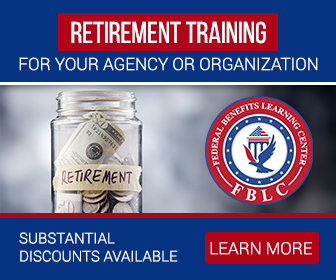Key Takeaways
- The Postal Service Health Benefits (PSHB) program is replacing FEHB coverage for USPS employees and retirees starting in 2025, bringing significant changes to your health insurance options.
- Understanding how these changes impact your Medicare enrollment, premiums, and overall retirement planning is crucial to making informed decisions before the transition.
A New Era for Postal Workers’ Health Benefits
The transition to the Postal Service Health Benefits (PSHB) program is reshaping health insurance for USPS employees and retirees. Whether you’re preparing for retirement or are already enjoying it, the changes coming in 2025 are essential to understand. This guide walks you through what to expect, how to prepare, and why timing is everything when navigating this shift.
Why the Change to PSHB?
- Also Read: Federal Retirement Advice You Didn’t Know You Needed—Until Now
- Also Read: The Latest Federal Employee News You Need to Know to Protect Your Retirement
- Also Read: Ready for Retirement? Here’s How Law Enforcement Officers Can Leave the Job with Benefits Intact
The move from the Federal Employees Health Benefits (FEHB) program to the PSHB program is driven by the Postal Service Reform Act of 2022. The aim is to create a health benefits system tailored specifically for USPS workers, retirees, and their eligible family members.
The transition allows the Postal Service to better align costs and benefits while integrating Medicare for those eligible. If you’ve been covered under FEHB, this might sound like a big change—and it is. But with the right preparation, you can adapt seamlessly.
Key Dates to Keep in Mind
Here’s a quick breakdown of critical timelines:
- 2024 Open Season: Runs from November 11 to December 9, 2024. This is when you can review and choose your new PSHB plan for coverage starting in 2025.
- 2025 Coverage Start Date: Your PSHB coverage begins on January 1, 2025.
- Medicare Enrollment: If you’re 65 or older and eligible, you’ll need to enroll in Medicare Part B by the time PSHB starts unless you fall under certain exceptions.
Mark your calendar now, especially for Open Season, as this is your chance to make the best decisions for your health coverage.
What Changes for Retirees?
Medicare Coordination
If you’re a USPS retiree and Medicare-eligible, enrolling in Medicare Part B is mandatory to maintain PSHB coverage. However, there are exceptions:
- Retirees who left federal service before January 1, 2025, and are not already enrolled in Part B may be exempt from this requirement.
- You’ll still need to pay the Medicare Part B premium, which is $174.70 per month in 2024, with adjustments for income.
Premiums and Deductibles
While specifics on PSHB premiums vary, expect costs to differ from FEHB plans. What you pay may depend on the integration of Medicare, your family size, and the plan you select.
FEHB Coverage Ends
Once PSHB begins, you will no longer be part of the FEHB program. Make sure your transition is smooth by confirming your new PSHB plan and any required Medicare enrollment.
How Does This Impact Your Retirement Planning?
Financial Adjustments
Planning your retirement budget is more important than ever. Medicare Part B premiums add a new layer of expense, so factor that into your calculations. Additionally, some PSHB plans may offer benefits that align with Medicare, potentially reducing your out-of-pocket costs.
Coverage Comparisons
During Open Season, take the time to compare your PSHB options. Consider factors like premiums, deductibles, provider networks, and prescription drug coverage. These choices can affect your financial well-being throughout retirement.
Preparing for Medicare
If you’re not yet enrolled in Medicare but are approaching age 65, you’ll need to act during your Initial Enrollment Period. This 7-month window starts three months before your 65th birthday, includes your birth month, and extends three months after. Missing this period could result in penalties, which are lifelong.
For those already enrolled in Medicare Parts A and B, the transition to PSHB should be simpler. Your Medicare coverage will work in tandem with your new health benefits.
What About Active Employees?
For active USPS employees, the transition to PSHB might seem less urgent, but it still requires attention. The new program could mean changes in premiums and plan options, so be sure to review everything during Open Season.
If you’re nearing retirement, this is the perfect time to ensure you understand how Medicare and PSHB will work together to support your healthcare needs in retirement.
Understanding the Open Season Process
Open Season is your window to make informed decisions about your PSHB coverage. Here’s how to prepare:
- Review Plan Options: Research the available PSHB plans, comparing their benefits, costs, and networks.
- Check Eligibility: Ensure you meet Medicare Part B requirements if you’re 65 or older.
- Make a Decision: Select the plan that best meets your needs before Open Season ends.
Failing to act during Open Season could result in automatic enrollment in a corresponding PSHB plan, which might not suit your preferences.
Benefits of the PSHB Program
Despite the changes, the PSHB program offers several advantages:
- Tailored Coverage: Plans are designed specifically for postal employees and retirees.
- Medicare Integration: For those eligible, combining PSHB with Medicare could lead to more comprehensive coverage.
- Simplified Management: By transitioning to PSHB, the Postal Service aims to streamline health benefit administration.
Potential Challenges
Of course, any major change comes with challenges. You might need to navigate new plan rules, adapt to Medicare requirements, and reassess your healthcare budget. But by staying informed and proactive, you can overcome these hurdles with confidence.
Steps to Take Now
- Educate Yourself: Read up on PSHB plans and how they compare to your current FEHB coverage.
- Plan for Medicare Enrollment: If you’re Medicare-eligible, prepare to enroll in Part B during your Initial Enrollment Period or Special Enrollment Period.
- Evaluate Your Needs: Consider your healthcare priorities, including family coverage, prescription costs, and provider access.
- Set Reminders: Don’t miss key deadlines, especially the 2024 Open Season.
What Happens if You Don’t Act?
If you fail to choose a PSHB plan during Open Season, you’ll be automatically enrolled in a plan that corresponds to your current FEHB coverage. While this ensures continuity, it might not be the best fit for your needs. Taking action ensures you have the coverage that works best for you.
Smooth Sailing Into 2025
The switch to PSHB might seem daunting, but it’s manageable with the right preparation. By understanding your options, meeting deadlines, and coordinating with Medicare, you can make the transition seamlessly. Whether you’re retiring soon or already enjoying retirement, the key is staying informed and proactive.
What This Means for Your Health and Peace of Mind
The upcoming PSHB changes are more than just a shift in programs—they’re an opportunity to reassess and optimize your healthcare coverage. With the right approach, you’ll not only navigate the transition smoothly but also set yourself up for years of quality health coverage tailored to your needs.













